They've lived in Georgia for more than 100 years - yet no one knows about them
Lahijs in Georgia

A small group of people has been living in Georgia for over a hundred years that few have heard about; currently there are only about 150 them left. They speak their own language and call themselves Lahijs.
However, a record of a people with such an ethnonym doesn’t exist.
First they were referred to as the Tats, but following the general census of 1939 they were recorded as Azerbaijanis.
“But we don’t consider ourselves Azerbaijanis. Our language is still alive, though already disappearing. We are gradually dwindling, so that soon the last carriers of our language will no longer exist.
Of course, it would be a pleasant thing to officially register our ethnic group, but who would be interested in that?”, reads a rough summary of the conversations I’ve had with local residents of Gombori village in the Kakheti region of Georgia.
 Entrance to the village of Gombori
Entrance to the village of Gombori
The village is located on the Gombori Pass that connects Tbilisi with Kakheti, some 55 kilometers from the capital.
The village is located quite high, at an altitude of 1,130 meters above sea level, and surrounded by a dense forest. It was the woody area that determined the selection as a place to set up by the first group of Lahijs that arrived in Georgia from the village of Lahic of the former Baku province. Today, the village is part of the Ismailli region of Azerbaijan.
The forest afforded the settlers an opportunity to hide from the bad weather, have access to food, and most importantly, to earn money: the trees could be turned into charcoal and sold afterwards.
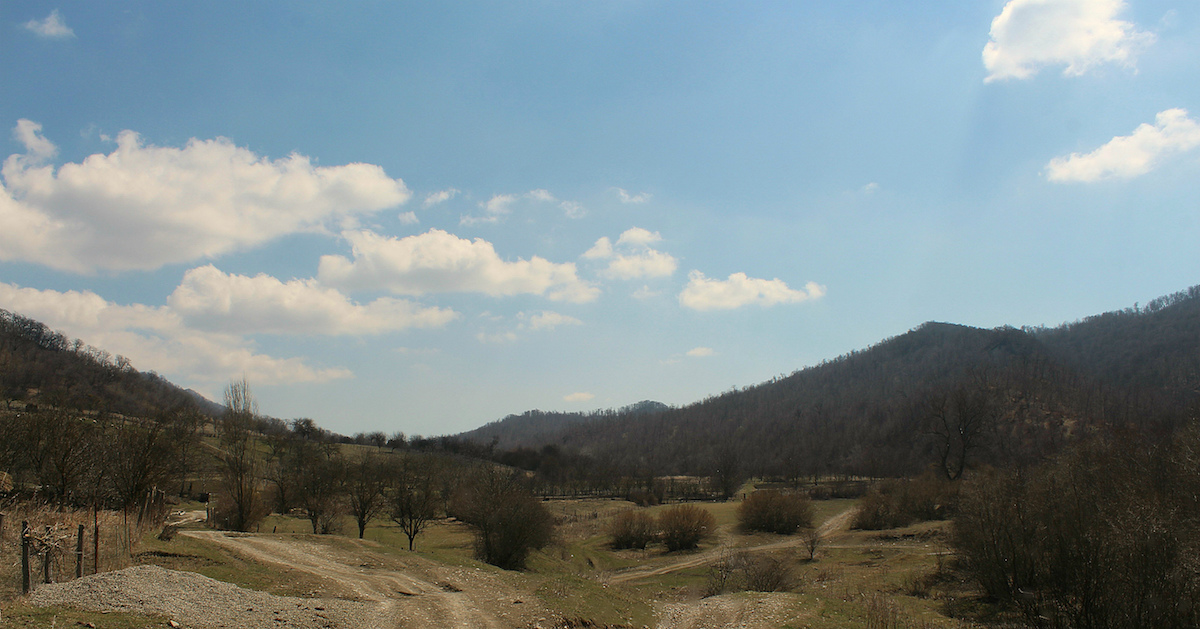 Road from the village leading to the forest
Road from the village leading to the forest
“Only men came in the beginning,” said a villager, retired sergeant major Aivaz Jafarov. “They produced charcoal, which was widely used at that time in smithies and smelters. Coal was especially useful for household purposes – for heating samovars and cooking shish kebabs.”
The migrants initially settled throughout the whole region, where they found work and shelter. After settling down, they began to bring over their families. Ultimately, by the time of World War II, the Lahijs had established their group in the village of Gombori.
Aivaz Jafarov demonstrates Lahij utensils inherited from ancestors
“Why did we leave Lahic? Well, the answer to that question goes back to the 7th century. It was the time of the Persian rulers from the Sassanid dynasty when our ancestors started moving to Lahic from Persia,” says Aivaz Jafarov.
“By the 17th century Lahic had already become a thriving craft center that produced cold weapons and copper utensils. The trade was vigorous and people lived in prosperity.
“That lasted until the end of the 19th century, which marked the appearance of machinery leading to the sharp decline of craft production of copper items. Then unemployment began. In addition, there were frequent riots. And the Lahijs began to leave the settlement and look for new habitats. Some of them went to Georgia.”
 The oldest house in the village, built around the 1910s
The oldest house in the village, built around the 1910s
Aivaz Jafarov’s parents came to Gombori in the 1930s, along with 20 other families. Men worked in a single team that produced charcoal, while women were engaged in housekeeping.
Their concept of “household” was simple due to the long forest life in plain hay tents. Only after having saved some money, were they able to join their relatives in the village, build their own small houses and start cattle farming.
 Typical Lahij households
Typical Lahij households
“After the beginning of the Second World War, all the men were dispatched to the front. Many of them died. My father did not return from the war either, I never saw him again – he was called up in 1942, and I was born in 1943,” says Aivaz Jafarov.
“When getting my birth certificate at the village Council, my mother was asked to produce documents for her husband, but she didn’t have them. She knew very little Georgian and could barely understand anything. So came the story of my name.
“What’s the boy’s name?” They ask her.
“Aivaz,” she replied.
– And what’s your father’s name?
– Jafar.
“Well, then your son will be Aivaz Jafarov.” “
That’s how all Lahijs received their second names, as their ethnical tradition only implied the use of the first name at the time. In this manner the currently widespread surnames appeared, such as Ismailov, Mamedov, Aliev, etc.
 The cemetery of the village. The first burial dates back to 1936. It’s the grave of the wife of Aivaz Jafarov’s Uncle
The cemetery of the village. The first burial dates back to 1936. It’s the grave of the wife of Aivaz Jafarov’s Uncle
The Russian military were always interested in this area. Immediately after Georgia’s annexation by the Russian Empire, military units were stationed there: in 1801, first an artillery and then a rifle battalion arrived. Russian officers brought their families and settled the village, which they called “sloboda” (settlement).
By the end of the 19th century, prior to the migration of the Lahijs, the population of Gombori was about 600 people, the majority of them being Russians.
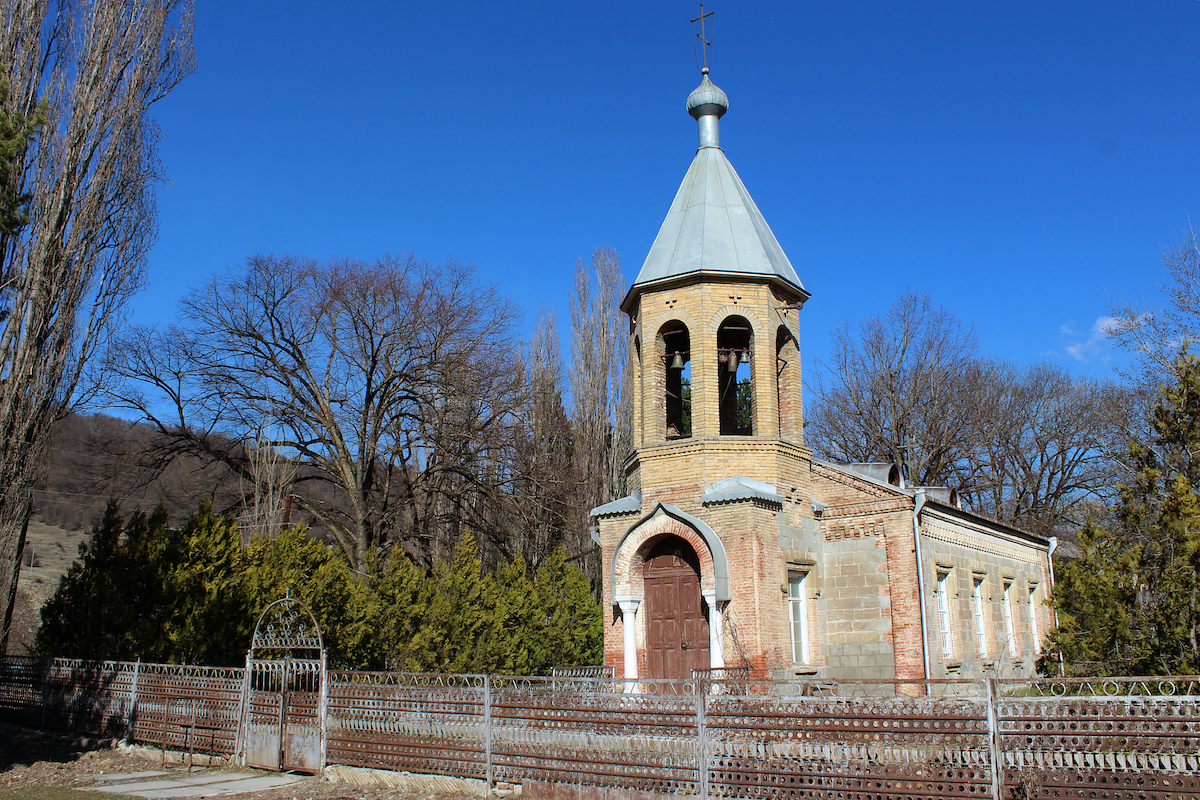 Military church of Gombori, built in 1888. Converted into a cinema during the Soviet era
Military church of Gombori, built in 1888. Converted into a cinema during the Soviet era
In Soviet times, there was a large military base with a fairly developed infrastructure that included a missile brigade.
Many male Lahijs then went on permanent military service, and women started working in the hospital and did housekeeping.
The number of Lahijs gradually increased, exceeding 400 by 1989.
Life had apparently changed for the better.
But then happed something quite unexpected: the Soviet Union collapsed and the military base was removed. The Russian military left along with their families.
 Here once lived a Russian family
Here once lived a Russian family
It was impossible to withdraw all the military equipment to Russia. The missiles and large military equipment were transported back.
The trucks were either abandoned or sold to local residents. They are still used on the farms of Gombori.
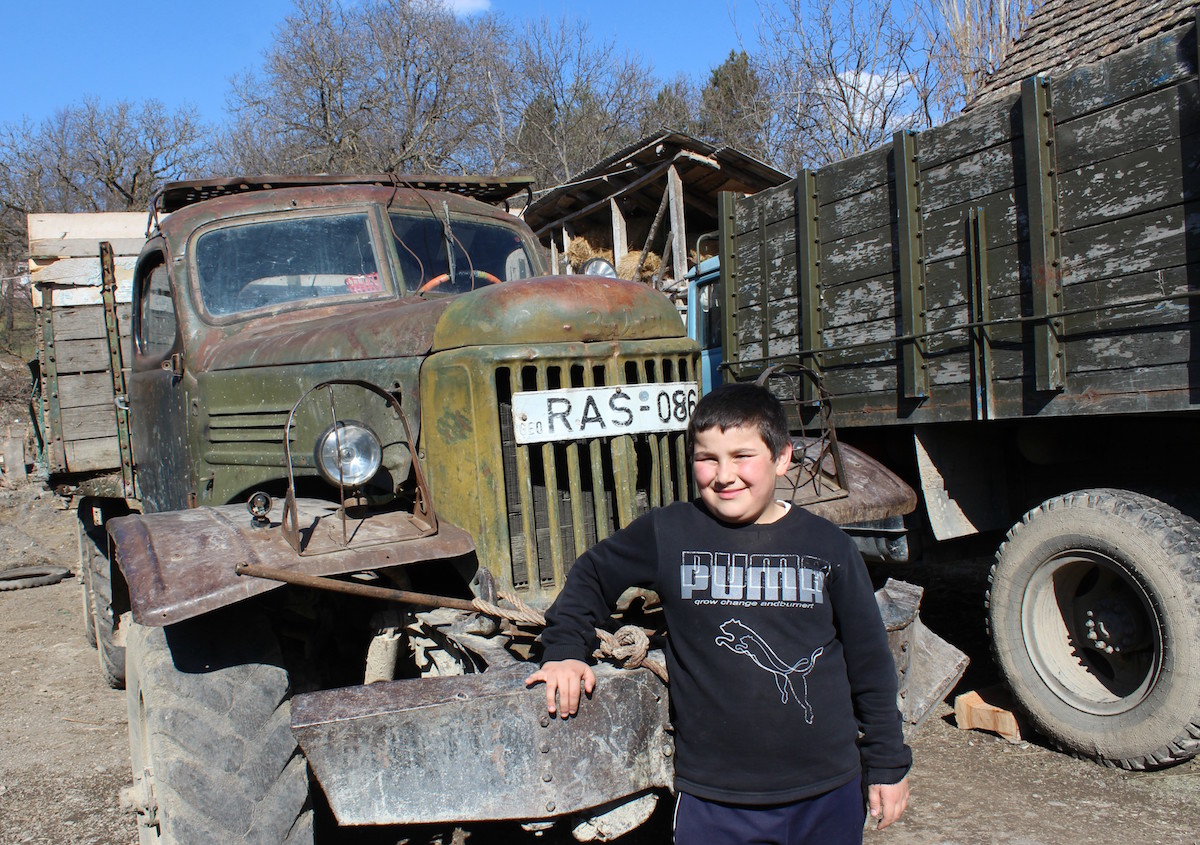 Soviet era trucks
Soviet era trucks
The disappearance of the Soviet military base and collective farm left the Lahijs at loose ends, forcing the youth to leave the village in search of a way to make a living.
“Today mostly pensioners remain in the village. The Lahijs that kept the memory of the traditions and customs of our ancestors are no longer alive,” says 83-year-old resident Sanam Bakhramova.
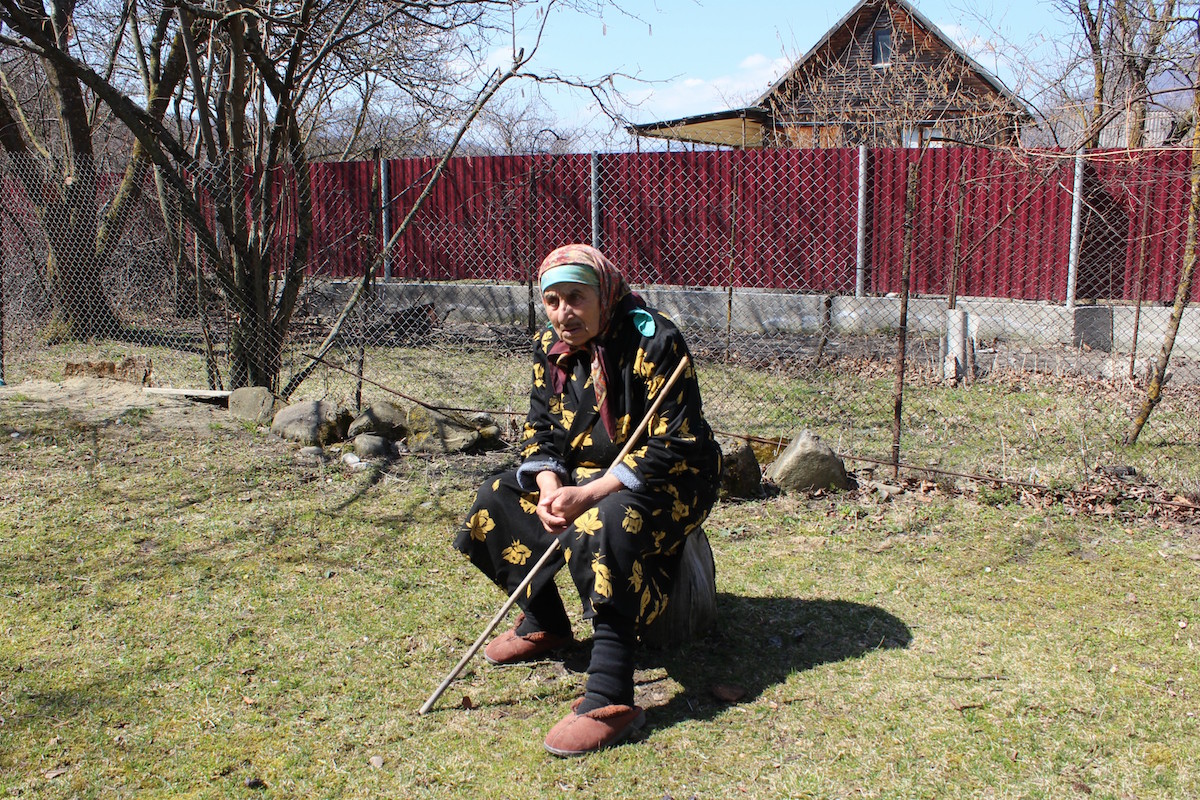 Sanam Bakhmarova
Sanam Bakhmarova
“I was born in Gombori. First my grandfather settled here and produced coal in the forest. His business did not go well. He incurred a pile of debts. Then he summoned his son from Lahic, my future father, passed him over to the creditor as a voluntary worker in payment of his debt, leaving afterwards for an unknown destination and never came back. He just disappeared without a trace.
“My father’s name was Bahram. He lived a long life, and died at almost 102. He fought in the war in the 1940s and made it back home without a single wound. But soon after his return, my mother became ill and died. The four of us children were left. Father brought a second wife and also had children with her. Overall, there were 9 brothers and sisters.
“I had only accomplished 2 grades at school when my father took me out to take care of the younger children. So I remained without an education.”
Sanam Bakhramova worked as a nurse in the hospital for 41 years. She lives alone and struggles with poverty, and often gives her small pension to her only daughter.
Sanam’s daughter lives in a suburb of Tbilisi, in the village of Lilo. She became a widow early on, with two children depending on her, one of them incapacitated and unable to move. And all Sanam can think about is how to help them.
 Street of the village
Street of the village
In the 1960s, environmental migrants from Pshav-Khevsureti, a highland region in the northeast of Georgia, were resettled in Gombori. By 1964, Georgians constituted the majority of the Gombori population.
Lahijs say that they have adopted many elements of cultural and household customs of Georgians.
“Sometimes, we happen to go to a Christian church. Together with Georgians we celebrate religious holidays, and Georgians, on their part, celebrate with us the main holiday of Muslims known as Kurban-Bairam,” says Shabaji Pashayeva, a mother of three children and grandmother of six grandchildren.
In the end, she caught up with me to say that Lahijs followed the Georgian custom and renounced marriage between relatives, which is allowed according to Islam.
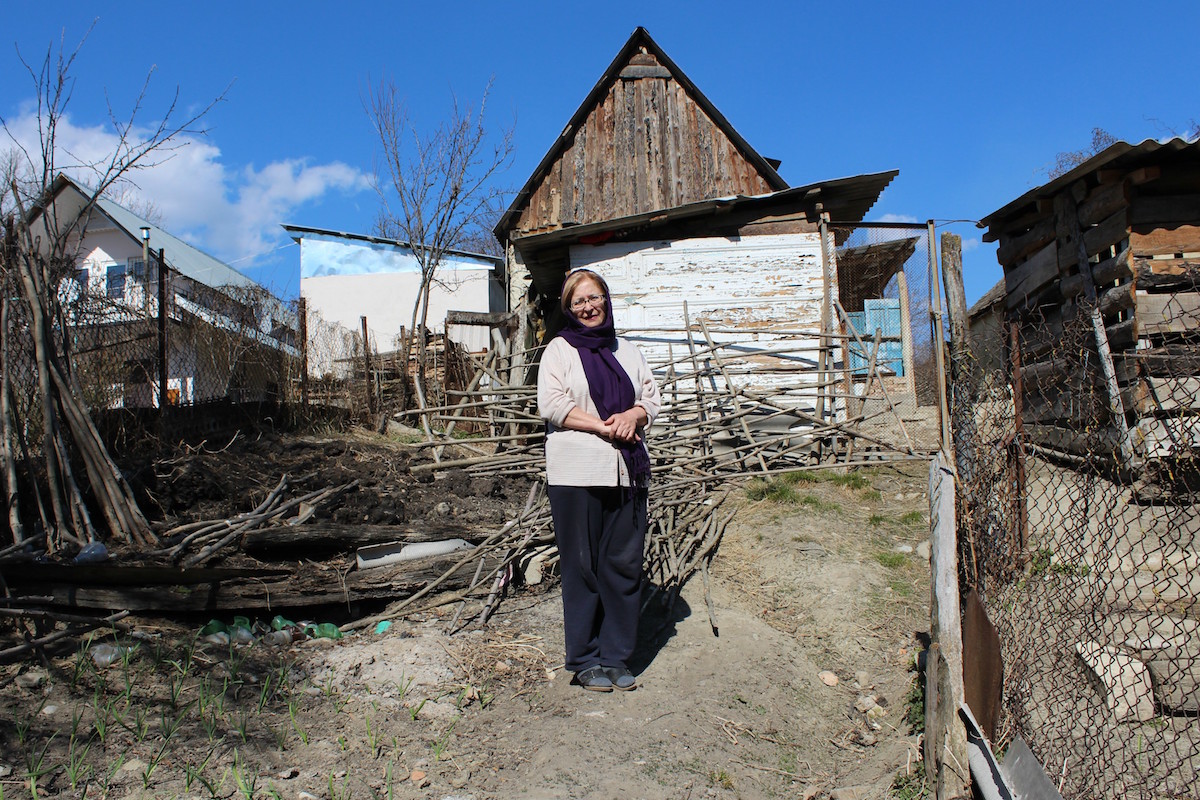 Shabaji Pashayeva
Shabaji Pashayeva
“When we used to live in Azerbaijan – we followed the customs of that country and refrained from alcoholic beverages and eating pork. In Georgia, we do not have such restrictions and feel free in our culinary options.
“Usually, a family dinner consists of rice, meat, lamb, beef and pork prepared in various ways. Yes, pork, you heard correctly. Almost all Lahijs eat it. Also, we often make sweet pancakes and sour milk soup with greens.”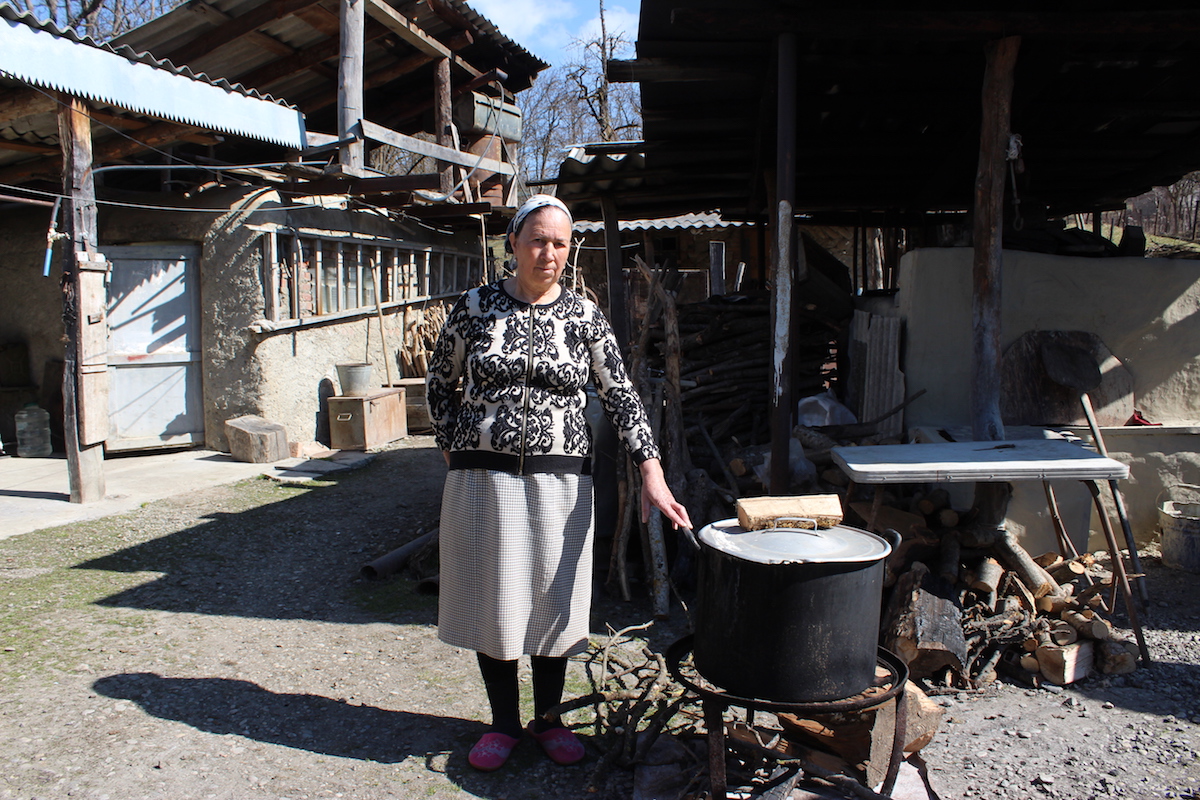 Khanuma Jafarova is considered the best cook in the village
Khanuma Jafarova is considered the best cook in the village
“There were two schools in Gombori: a Georgian and a Russian one. Lahijs themselves decided where to take their children. I personally graduated from the Russian school, and my grandchildren go to the Georgian,” says Shabaji Pashayeva. “Normally, Lahijs can easily speak four languages.
“With Georgians we talk in Georgian. We speak fluent Russian as well, although we do not have use for it frequently, with the exception of my neighbor perhaps – the only Russian in the village,” Shabaji Pashayeva added.
 The only Russian resident of the village
The only Russian resident of the village
“We speak Azeri with Tats that also live in our village. The Tats are the descendants of the ancient Iranian people who settled in the village of Gombori along with the Lahijs. The difference was that they didn’t arrive from Lahic, but from “Iranian Azerbaijan”. Currently there are nearly as many of them as us, and they too were recorded as Azerbaijanis. But the thing is that, in addition, they don’t speak the Tat language anymore.”
And finally, Lahijs usually use their own language between themselves in the household environment.
“It’s impossible to write in the Lahij language as we never had our own written language,” Shabaji Pashayeva said. “The middle and senior generations know Lahij well. We also teach our children, but youths for some reason shy away from speaking it not only at home, but also with fellow villagers. And I wish so much that we preserve the language of our ancestors.”

Elvin Pashev, a second grader, speaks good Georgian and Azerbaijani, but doesn’t speak Lahij – though he understands it.
The Lahijs are Shiite Muslims by religion.
After Georgia acquired independence and religious freedom, people, in a joint effort, turned one of the village abodes into a prayer house which they called the mosque. The local Muslim residents of Gombori now attend it to pray, perform rituals and celebrate religious holidays.
Former dwelling that serves as a Muslim prayer house
According to the 2014 census, 304 conditional “Azerbaijanis” live in the village of Gombori. Half of them being Lahijs, the other half Tats. Compared to 1989, the number of the Muslim population of the village has decreased by more than double.
Lahijs go to live in various parts of Georgia, which makes it impossible to determine the exact number of them.
They leave the village mostly for socio-economic reasons. The locality, where they came to more than 100 years ago to make a living and survive, has now become of little use for them. Cutting trees in the forest is prohibited, the coal is no longer produced, and the military unit where they used to work is long gone.
So there remains only one thing – to go to the forest and collect berries, wild fruits, and mushrooms for selling.
This is a job for the young family men.
 Vahid Pashaev, father of two children
Vahid Pashaev, father of two children
Their wives, meanwhile, sell gifts from the forest by the roadside.




















